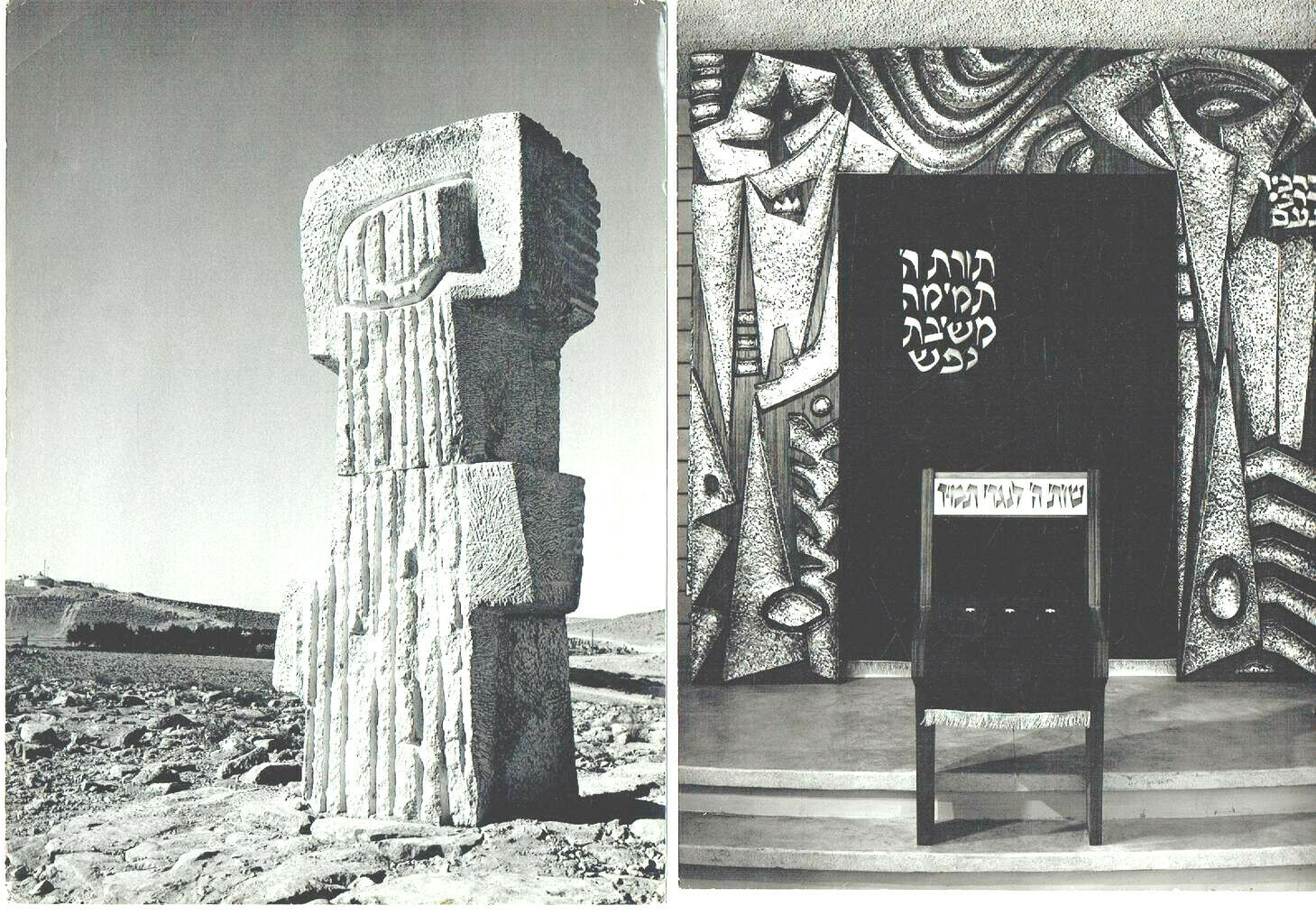-40%
DOV FEIGIN Israeli sculptor, his autographs on 2 photos of his works 1960's
$ 26.4
- Description
- Size Guide
Description
DOV FEIGIN Israeli sculptor, his autographs on 2 photos of his worksMade by photographer I. Zafrir,
1960s,
Size: 28 x 20.3 cm. (11 x 8″)
1. AUTOGRAPH ON THE PHOTO OF HIS SANDSTONE SCULPTURE
IN HEBREW WRITTEN ON REVERSE SIDE BY HAND OF DOV FEIGIN:
“SANDSTONE SCULPTURE SYMPOSIUM OF SCULPTURES IN MITZPE RAMON
DOV FEIGIN”
2. THE PHOTO OF ARON KODESH (TORAH ARK) IN HEBREW WRITTEN ON
REVERSE SIDE BY HAND OF DOV FEIGIN:
“ARON KODESH (TORAH ARK) ( FOR SCHOOL) IN PARDES HANA, BELOW:
DOV FEIGIN”
Light wear.
This item comes from archive of Gabriel J.Tapir
TALPHIR, GABRIEL JOSEPH (1901–1990)
, Hebrew art critic and poet. Talphir was born in Stanislav, Galicia, and after teaching in secondary schools in Vilna and Zamosc immigrated to Palestine in 1925, and from 1932 became editor of Gazit, a periodical for art and literature.
DOV FEIGIN (born 1907, died 2000)
was an Israeli sculptor.
Feigin was born in 1907 in Luhansk, Ukraine, then part of the Russian Empire.[1] His father was a tailor. Feigin attended public Ukraine school as well as a Talmud Torah school. In 1920, Feigin’s family moved to Gomel, where he became a member of the Socialist-Zionist movement Hashomer Hatzair. In 1924, he was arrested and imprisoned for three years. In 1927, after his release, he emigrated to the Mandate Palestine and was one of the founding members of the Afikim Kibbutz. In 1933, Feigin was accepted to the École nationale supérieure des arts décoratifs in Paris, France, where he studied as a traditional sculptor. His works from that period were mostly traditional statues in stone. In 1937, Feigin returned to Tel Aviv. In 1948, he joined an artistic group called “Ofakim Hadasim” (Hebrew for – “New Horizons”) founded earlier that year by Yosef Zarizky. The group was heavily inspired by the European Modern Art Movement. In 1956,[2] influenced by this group, Feigins work transformed to be more abstract . He began to use metal (iron) in constructing his sculptures. Like many of the “New Horizons” artists (like Yitzhak Danziger), his works were influenced by the Israely Canaanites movement. Works like 1956’s “Bird” and “Alomot” (he: אלומות – “stalk of wheat“) or 1957’s “Ladderes” present a liniar abstract structure. In 1948 and 1962, he attended the Venice Biennale. In 1966, he designed a relief inside Yad Kennedy, a memorial to John F. Kennedy in Jerusalem. One of his most famous sculptures, Animal, (1958, restored in 2006) is now in the sculpture garden of the Tel Aviv Museum of Art in Tel Aviv, Israel. In 1946, Feigin was a co-recipient of the Dizengoff Prize for Sculpture. Sandberg Prize recipient











